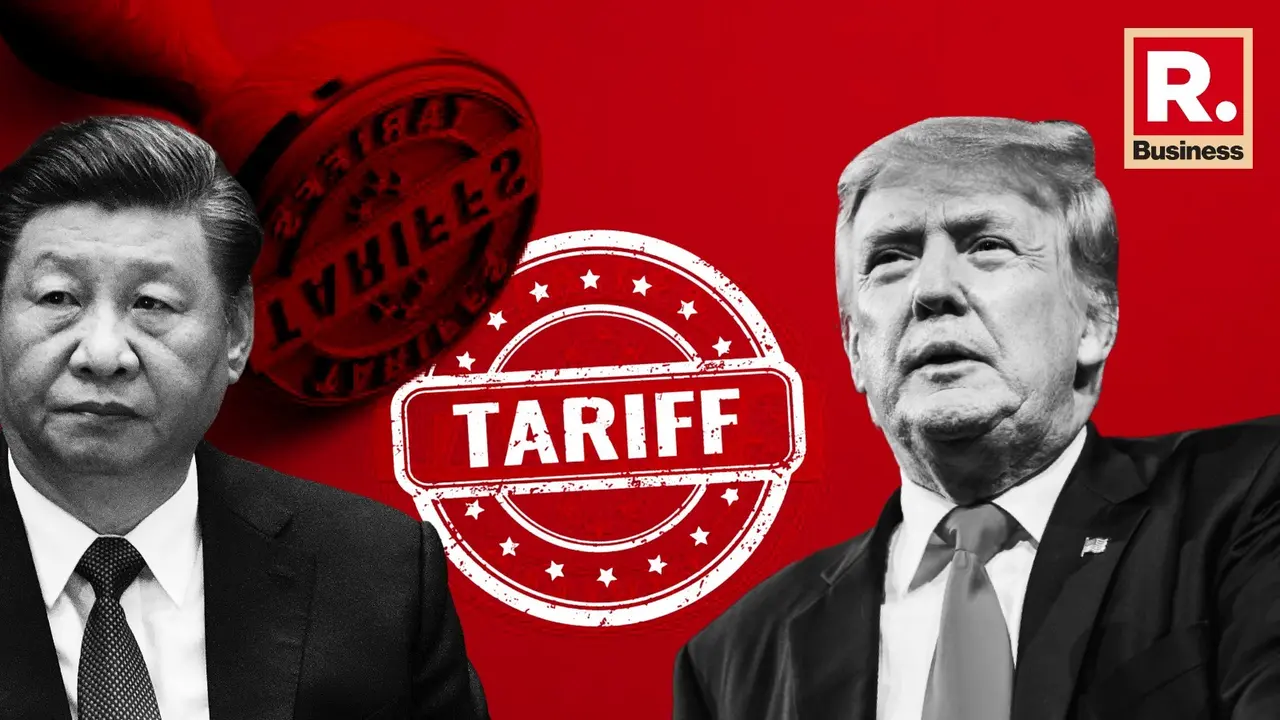Updated 4 April 2025 at 17:51 IST
Trade War Begins: China's Additional 34% Tariffs On US: A Good News For India?
China imposes 34% tariffs on U.S. goods, curbs rare-earth exports after Trump’s 54% hike; global trade tensions soar, markets tumble, growth likely to slow.
- Republic Business
- 3 min read

China has announced sweeping retaliatory measures against the United States, including a 34% tariff on all U.S. goods, effective April 10, following President Donald Trump ’s aggressive new trade actions. The Chinese Finance Ministry confirmed the tariffs on Friday, stating they are aimed at safeguarding national interests amid rising economic tensions.
In addition to tariffs, China has imposed export controls on key rare-earth elements vital to high-tech and defense industries — including samarium, gadolinium, terbium, dysprosium, lutetium, scandium, and yttrium — with restrictions taking effect from April 4. The move is seen as a strategic pressure point, given the U.S.'s reliance on Chinese rare earths for electronics, green tech, and weapons systems.
China’s Commerce Ministry stated the controls are meant to “better safeguard national security and fulfill international obligations such as non-proliferation.” Beijing also placed 11 U.S. entities on its “unreliable entity” list, paving the way for further punitive actions.
The retaliatory tariffs by China are coming after China’s strong opposition against the reciprocal tariffs by the US. China’s Ministry of Commerce on Thursday criticized the move as a violation of international trade norms, describing it as a “typical unilateral bullying practice” aimed at reshaping the global trade order.
As per experts, the trade war is not a good thing for the global economy as it will have an impact on global growth leading to the reduction in the growth of various countries. The uncertainty emanating from trade is hitting the global economy at a time when the global growth is already slowing.
According to the World Economic Forum, the global growth prediction for 2025 and 2026 is 3.3% which is lower than the average global growth of 3.7% witnessed in the last few years. The slow global growth will have an impact on India's economy. But higher tariffs on Vietnam, Bangladesh can make our exports cost competitive in certain sectors such as gems and jewelry, leather, textile etc.
Also Read: Apple’s iPhone 16 Pro Max May Soar to $2,300 — Thanks to Donald Trump’s Tariff Punch
Trade Snapshot
According to the office of United States Trade Representative, in 2024, total goods trade between the U.S. and China reached $582.4 billion. U.S. goods exports to China dropped 2.9% to $143.5 billion, while imports rose 2.8% to $438.9 billion, resulting in a $295.4 billion trade deficit — a 5.8% increase over 2023.
Also, the U.S. imports from China hit $462.62 billion in 2024, cementing China as the top goods supplier to the U.S., accounting for 16.5% of all imports.
On the export side, the U.S. remains the second-largest goods exporter globally, shipping out $2.1 trillion worth of goods in 2022. Top U.S. export destinations included Canada ($356.5B), Mexico ($324.3B), China ($150.4B), Japan ($80.2B), and the United Kingdom ($76.2B).
Trump Tariffs on China
The retaliation comes in response to President Donald Trump’s announcement of a 34% tariff on Chinese goods earlier this week, adding to an existing 20% duty — bringing the total levies to 54%, nearing the 60% tariff he pledged during his campaign. A 10% baseline tariff will take effect from Saturday, with higher "reciprocal tariffs" kicking in from April 9. Trump defended the move, claiming China imposes 67% tariffs on U.S. imports, and that the U.S. must act to protect domestic industries.
The impact on financial markets was immediate: $250 trillion in market value was wiped out on Wall Street in a single day, while the dollar lost all its post-election gains. China condemned the move, accusing the U.S. of abandoning multilateral trade commitments that had long benefited Washington.
Advertisement
Published By : Rajat Mishra
Published On: 4 April 2025 at 17:35 IST
